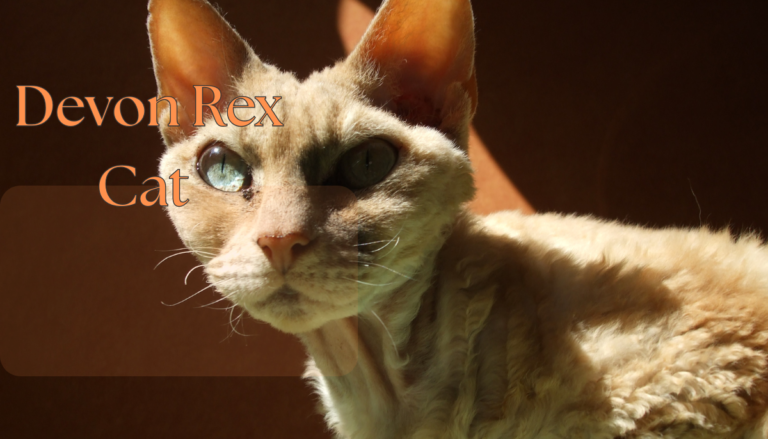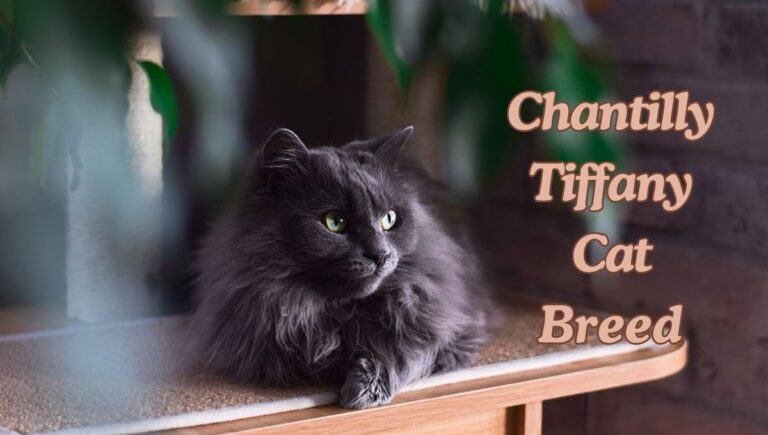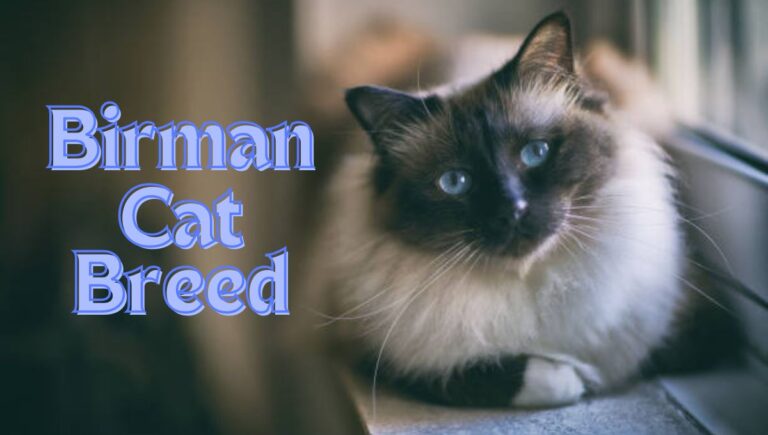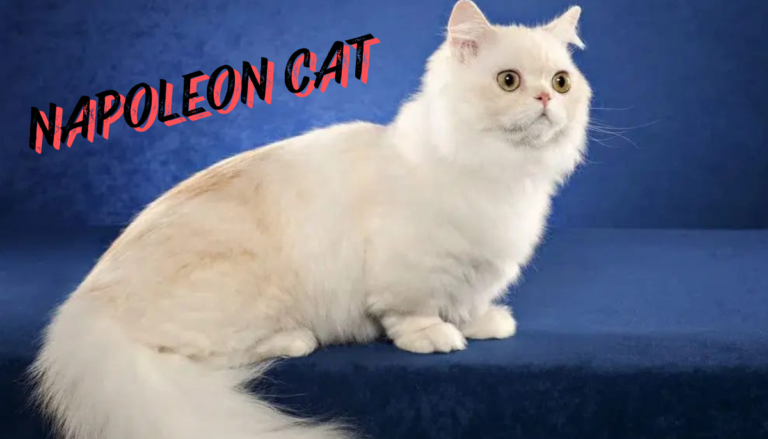Manx Cat Breed
The Manx cat is a breed of domestic cat originating from the Isle of Man, with a unique history that dates back centuries. Renowned for its distinctive taillessness, the Manx exhibits a rounded appearance, from its head to its rump. This breed’s name, ‘Manx,’ is derived from the native language of the Isle of Man, reflecting its deep cultural significance.
Key characteristics that set the Manx apart include its round head, large eyes, and robust body. The most striking feature, however, is the absence of a tail, which ranges from completely tailless, known as ‘rumpy,’ to a small stub, referred to as ‘stumpy.’ This trait is the result of a genetic mutation that has become a hallmark of the breed.
Manx cats are known for their dog-like behaviors, such as fetching and showing strong loyalty to their owners. They possess a double coat that can come in various colors and patterns, adding to their visual appeal. Their hind legs are longer than the front, giving them a powerful and distinctive hop-like gait.
Health-wise, Manx cats are generally hardy, but they can be prone to a genetic condition called ‘Manx syndrome,’ which affects their spine and may cause mobility issues. Nutritionally, they require a balanced diet to maintain their muscular physique and energy levels.
Table of Contents
II. Origin and History of the Manx Cat Breed
A. The Enigmatic Beginnings
The Manx cat’s journey begins on the Isle of Man, a small island nestled in the Irish Sea. The breed’s exact origins are veiled in mystery, but it is widely accepted that the Manx’s lineage dates back several centuries. The absence of a tail, the breed’s most defining trait, is attributed to a spontaneous genetic mutation. Over time, due to the island’s isolation, this trait became a common feature among the local feline population.
1. Historical Significance
Historically, the Manx cat has been a symbol of the Isle of Man, appearing on coins and stamps, and becoming an intrinsic part of Manx identity. The breed’s robust build and hunting abilities were highly valued in controlling rodent populations, making them a favored companion among farmers and seafarers.
2. Geographical Influence
The Isle of Man’s rugged landscape has undoubtedly shaped the Manx cat’s physical attributes. The breed’s sturdy legs and rounded physique are well-suited to the island’s terrain, suggesting that only the fittest survived and passed on their genes. This natural selection process has resulted in a breed known for its agility and strength.
3. Breeds and Development
While the Manx is a breed in its own right, it is possible that its development was influenced by other breeds brought to the island through human travel and trade. However, the isolation of the Isle of Man has ensured that the Manx has retained its unique characteristics without much crossbreeding.
B. Folklore and Legends
The Manx cat is steeped in folklore, with tales of its origin ranging from whimsical to mystical. One legend suggests that the cat was late boarding Noah’s Ark and lost its tail when Noah closed the door. Another story tells of a royal lineage of tailless cats gifted by the gods. These tales, while not factual, add to the breed’s mystique and allure.
C. Modern Characteristics
Today, the Manx cat’s characteristics are a testament to its origin story. The breed’s strong hindquarters are not just a product of its environment but also a key aspect of its genetic heritage. The Manx’s affectionate nature and loyalty can be seen as a reflection of the close-knit community on the Isle of Man, where the breed has been cherished for generations.

III. Physical Characteristics of the Manx Cat Breed
| Characteristic | Detail |
|---|---|
| Height | 10-14 inches |
| Weight | 7-13 pounds |
| Life Span | 12-16 years |
| Good With | Families, children, other pets |
| Temperament | Playful, intelligent, family-oriented |
| Intelligence | High |
| Shedding Amount | Medium |
| Grooming | Moderate; varies with coat type |
| Exercise Needs | Moderate to high |
| Energy Level | High |
| Drool Amount | Low (not known to be a drooling breed) |
| Coat Length/Texture | Short to long, dense, plush double coat |
| Colors | White, blue, black, red, cream, silver, brown |
| Patterns | Bicolor, solid, tortoiseshell, tabby, among others |
B. The Manx Cat: Size, Coat, and Color Variations
The Manx cat, a breed as enigmatic as it is charming, is known for its robust build and array of coat types and colors. Here, we delve into the specifics of this breed’s physical attributes, providing a detailed guide that cat enthusiasts and potential owners will find invaluable.
1. Size and Weight
The Manx cat is considered a medium-sized breed. Males typically weigh between 10 to 12 pounds, while females are slightly lighter, usually weighing around 8 to 10 pounds. Their height can range from 10 to 14 inches, giving them a compact and rounded appearance.
2. Coat Type and Texture
Manx cats boast a double coat that can vary from short to long. The shorthair Manx should have a glossy, hard outer coat, while the longhair variety, sometimes referred to as the Cymric, should exhibit a silky, medium-length coat with longer tufts on the neck, breeches, and abdomen. The coat’s texture is dense and plush, providing insulation and a soft feel to the touch.
3. Color Variations
When it comes to color, the Manx cat displays a spectacular palette. They can be found in nearly any color, including but not limited to white, blue, black, red, cream, silver, and brown3. Each color has its own unique characteristics:
- White: A pure white coat that may glisten in the light, with pink nose leather and paw pads.
- Black: A dense coal black coat with consistent color from root to tip.
- Blue: Lighter shades are preferred, with a uniform tone and blue nose leather and paw pads.
- Red: A rich, clear, and brilliant red without shading or markings.
- Cream: A buff cream shade across the body, with lighter shades favored in the show ring.
- Chinchilla Silver: A sparkling silver effect with a pure white undercoat and black tipping.

C. Distinctive Features of the Manx Cat Breed
The Manx cat is a breed that stands out in the feline world, not only for its taillessness but also for other distinctive features that make it unique. Below is an exploration of these traits that set the Manx apart from other cat breeds.
1. Tail Characteristics
The most notable feature of the Manx cat is its range of tail lengths, categorized by the following terms:
- Rumpy: Completely tailless, often with a dimple at the base of the spine.
- Rumpy-riser: A short knob of tail that consists of one to three vertebrae.
- Stumpy: A short tail stump that is more noticeable than a rumpy-riser but still significantly shorter than the average cat tail.
- Longy: A tail almost normal in length, but usually kinked and shorter than that of other breeds.
2. Body and Legs
The Manx cat’s body is compact and muscular, with a broad chest and a short neck, contributing to its rounded appearance. One of the breed’s peculiarities is its hind legs, which are longer than the front legs. This unique feature gives the Manx a distinctive hopping gait, especially when it runs or jumps.
3. Head Shape
Manx cats have a round head with a small nose, which complements their overall circular silhouette. Their large eyes and ears add to their expressive and endearing face.
4. Coat Texture and Variants
Manx cats can have either long or short hair, but all varieties share a dense, plush double coat. The short-haired Manx is more common, with a glossy, hard outer coat, while the long-haired variant, known as the Cymric, has a silky, medium-length coat.
5. Eye Color
The eyes of a Manx cat are usually a variation of gold, but they can also be copper, green, hazel, blue, or even odd-eyed, adding to the breed’s striking appearance.
6. Unique Physical Traits
Beyond the taillessness, the Manx cat’s rounded physique, powerful hind legs, and ability to jump are traits that not only distinguish it from other breeds but also speak to its history as a skilled hunter and agile survivor on the Isle of Man.
IV. Temperament and Personality of the Manx Cat Breed
The Manx cat is a breed that exudes a warm and friendly personality, making it a beloved companion in many households. Known for their social and playful nature, Manx cats are often described as having a dog-like loyalty, which endears them to their human families. Here’s an in-depth look at the temperament and personality of the Manx cat breed.
A. General Demeanour
Manx cats are renowned for their high level of friendliness and sociability. They are typically easygoing and affectionate, enjoying the company of humans and other pets alike2. Their calm and gentle nature makes them excellent companions for children, and they are known to be quite adaptable to various living environments.

1. Behavioural Traits
Playfulness and intelligence are standout traits of the Manx cat. They are curious explorers who love to engage in play, often using their paws to manipulate objects and open doors. Despite their hunting instincts, Manx cats are not aggressive towards humans and are excellent jumpers, which can sometimes lead to mischief as they explore high places.
Positive Traits:
- Affectionate: Manx cats form strong bonds with their owners and seek out their company.
- Intelligent: They are quick learners and can be trained to perform tricks or follow commands.
- Playful: Their playful nature keeps them active and can be quite entertaining for their owners.
Challenging Traits:
- Stubbornness: Some Manx cats may exhibit stubborn behavior, which requires patience and consistent training to manage.
- High Energy: They have high energy levels and need adequate playtime and stimulation to prevent boredom.
2. Managing Behavioural Issues
To address the breed-specific behavior issues of the Manx cat, it’s important to provide them with a stimulating environment that caters to their playful and curious nature. Interactive toys, puzzle feeders, and regular play sessions can help keep their minds active and engaged. Consistent training and positive reinforcement can effectively manage any stubborn tendencies.
For those with a particularly adventurous Manx, ensuring that the home is cat-proofed with safe access to high places can prevent accidents and allow the cat to satisfy its climbing instincts. Regular grooming and exercise will also help maintain their physical and mental well-being.
V. Care and Maintenance of the Manx Cat Breed
A. Grooming Needs
The Manx cat, with its thick double coat, requires regular grooming to maintain its coat’s health and appearance. Here are some grooming tips tailored to the needs of this unique breed:
- Brushing Frequency: For shorthaired Manx cats, brushing once or twice a week is sufficient to remove loose hair and prevent matting. Longhaired Manx, or Cymrics, may require daily brushing to keep their fur tangle-free.
- Grooming Tools: A stainless steel comb and a slicker brush are essential tools for Manx cat grooming. The comb can help detect any knots or tangles, while the slicker brush will smooth out the coat and remove dead hair.
- Bathing: Manx cats do not require frequent baths, but occasional washing can help keep their coat clean. Ensure to use a cat-specific shampoo and to rinse thoroughly.
- Nail Trimming: Regular nail trimming is important to prevent overgrowth and scratching issues. A quality pair of cat nail clippers should be part of your grooming kit.
- Ear Cleaning: Check and clean the Manx’s ears regularly to prevent wax buildup and potential infections.
B. Health Considerations for the Manx Cat Breed
The Manx cat, while generally robust, has specific health considerations due to its unique genetic makeup. The breed is known for a condition called Manx Syndrome, a collection of health issues related to the gene that causes their taillessness. This can lead to spinal problems, such as spina bifida, and issues with the nerves affecting mobility and organ function. Regular veterinary check-ups are crucial to monitor for signs of these conditions.
Common health problems also include corneal dystrophy and feline asthma, which require attentive care and can often be managed with medication. Preventive measures include maintaining a healthy diet, regular exercise, and keeping up with vaccinations and parasite control.
The average lifespan of a Manx cat is around 12-16 years, but this can be shorter for those with severe health issues. To promote a longer and healthier life, provide a safe environment, regular grooming, and mental stimulation. It’s also important to work with a reputable breeder who screens for genetic conditions to ensure the healthiest possible start in life.
C. Nutrition for the Manx Cat Breed
Proper nutrition is pivotal for the health and vitality of the Manx cat. These cats require a balanced diet rich in protein, essential for muscle maintenance, and fats for energy. Given their thick double coat, incorporating fish oils and omega-3 fatty acids is beneficial for maintaining a healthy, shiny coat.
For Manx cats, a diet with amino acids like taurine is crucial for vision and heart health, while fiber aids in digestion and weight control. It’s important to select high-quality cat food where the first ingredient is a source of animal protein, such as chicken or fish.
Feeding schedules and portion control should be tailored to the cat’s size, age, and activity level. Adult Manx cats typically do well with two meals a day, while kittens may require more frequent feeding. Always ensure fresh water is available, and be mindful of the calorie content to prevent obesity, which can exacerbate potential spinal issues inherent to the breed.
Avoid overfeeding and monitor the cat’s weight regularly. Consult with a veterinarian to determine the best diet plan for your Manx cat, especially if there are any signs of food allergies or sensitivities.
D. Exercise for the Manx Cat Breed
The Manx cat, with its playful nature and high energy levels, requires a well-thought-out exercise plan to stay healthy and content. Here’s a tailored exercise routine for this unique breed:
- Playtime: Engage your Manx in 30 to 60 minutes of playtime daily. Use interactive toys like feather wands, laser pointers, and puzzle toys to stimulate their hunting instincts and keep them mentally sharp.
- Climbing: Manx cats love to climb, so provide cat trees or safe shelving to encourage this natural behavior. This will also allow them to exercise their powerful hind legs.
- Agility Training: Consider agility training to harness their excellent jumping abilities. Set up a mini obstacle course at home with jumps and tunnels to challenge them physically and mentally.
- Frequency: Daily exercise is essential for the Manx. Break it down into two sessions if needed, especially for kittens or more active individuals.
Remember, every Manx cat is an individual, so tailor the exercise to their personality and health status. Regular play and exercise will not only keep your Manx fit but also deepen the bond you share with your feline friend.
VI. Suitability for Families and Other Pets to the Manx Cat Breed
A. Compatibility with Children and Other Animals
The Manx cat is a breed that is well-suited for family life, including households with children and other pets. Known for their affectionate and sociable nature, Manx cats often exhibit a high level of friendliness and playfulness, making them excellent companions for kids. They are also known to be patient and tolerant, which is ideal for the sometimes unpredictable behavior of young children.
When it comes to other animals, Manx cats are generally amiable and can coexist peacefully with other pets, including dogs and cats. Their dog-like traits, such as loyalty and a love for play, contribute to their ability to forge friendships with canines, especially with breeds that are more laid-back and cat-friendly.
B. Multi-Pet Households
In multi-pet households, it’s important to consider the Manx cat’s territorial nature. Introducing a Manx to existing pets should be done gradually, with controlled interactions to allow all animals to adjust to each other’s presence. Ensuring that each pet has its own resources, such as food bowls, water dishes, and litter boxes, can help prevent conflicts over territory and resources.

C. Environmental Needs
Manx cats are highly adaptable to various living environments, from cozy apartments to spacious homes. They do not require a special environment or temperature but do appreciate a safe and comfortable space to retreat to. Providing vertical spaces for climbing and perching can satisfy their need for exercise and exploration. Manx cats also enjoy interactive play, so having a variety of toys and engaging in daily play sessions will help them settle in and feel at home.
In conclusion, the Manx cat breed is an excellent choice for families looking for a pet that is good with children and other animals. With their adaptable nature and moderate environmental needs, Manx cats can thrive in a variety of home settings, making them a versatile and loving addition to any family.
VII. Adoption and Breeder Considerations for the Manx Cat Breed
A. The Benefits of Adoption
Adopting a Manx cat from a shelter or rescue organization is a compassionate and rewarding decision. It not only provides a loving home to a cat in need but also contributes to the welfare of many other animals. Adopting from shelters helps to alleviate the burden on these facilities, allowing them to rescue and care for more animals. Additionally, adopted cats often come with vaccinations, spaying/neutering, and microchipping included in the adoption fee, which can be cost-effective for the adopter. Moreover, adopting a pet has been linked to positive effects on mental health, reducing stress, anxiety, and feelings of loneliness.
B. Choosing a Reputable Breeder
If you’re set on purchasing a purebred Manx cat, it’s crucial to select a reputable breeder. A responsible breeder will be registered with a cat association, willing to let you visit the cattery, and transparent about their breeding practices. They should provide health screenings for genetic conditions and offer a health guarantee for the kittens. Ethical breeders will also ask you questions to ensure you’re a suitable match for their cats, demonstrating their concern for the animals’ well-being.
C. Financial Considerations
The cost of adopting or purchasing a Manx cat can vary widely. Adoption fees can range from nominal to several hundred dollars, depending on the shelter and the services included. When purchasing from a breeder, the price can be significantly higher, especially for a breed like the Manx, which may have specific health considerations due to its unique genetic traits. Prospective owners should also account for the long-term costs of cat ownership, including food, healthcare, grooming, and other supplies, which can add up over the cat’s lifetime.
VIII. Conclusion: Embracing the Manx Cat Breed
A. The Essence of the Manx Cat
The Manx cat is a breed that captures hearts with its distinctive taillessness, rounded physique, and affectionate temperament. Originating from the Isle of Man, this breed has a storied history filled with folklore and legend. The Manx stands out with its dog-like behaviors, such as loyalty and playfulness, making it an exceptional companion.
B. The Call for Responsible Ownership
Owning a Manx cat is a rewarding experience that comes with a set of responsibilities. Prospective owners must commit to providing proper care, including regular grooming, a balanced diet, and ample exercise to cater to the breed’s high energy levels. Awareness of the breed’s health considerations, particularly Manx Syndrome, is crucial for ensuring a healthy life.
Responsible ownership also means considering the cat’s environmental needs and ensuring compatibility with all family members and other pets. The decision to bring a Manx into your home should be made with a full understanding of the breed’s requirements and a commitment to providing a loving, lifelong home.
FAQ’s about Manx Cat Breed
What is the origin of the Manx cat breed?
The Manx cat originates from the Isle of Man, where it is believed to have developed its tailless characteristic through a genetic mutation. This breed is one of the oldest known cat breeds and has been a part of the island’s history for centuries
How can I provide a suitable living environment for my Manx cat?
Manx cats are adaptable and can thrive in various living environments. They appreciate safe indoor spaces with opportunities to climb and explore. Providing interactive toys and ensuring a stimulating environment can help keep them active and content
Are there specific grooming needs for Manx cats?
Yes, Manx cats have a double coat that requires regular grooming. Short-haired Manx should be brushed weekly, while long-haired variants may need daily grooming to prevent matting. Regular ear cleaning and nail trimming are also recommended
What health issues should I be aware of when caring for a Manx cat?
Manx cats can be prone to Manx Syndrome, which includes a range of health issues related to their spinal development. It’s important to monitor for signs of spinal problems and consult with a veterinarian for regular check-ups
Where can I adopt or buy a Manx cat?
Manx cats can be adopted from shelters, rescue organizations, or purchased from reputable breeders. When choosing a breeder, ensure they follow ethical breeding practices and provide health screenings for the kittens
Are Manx cats rare?
While not extremely rare, Manx cats are less common than some other breeds due to their unique genetic traits. Their rarity can vary depending on the region and availability in local shelters or breeders







